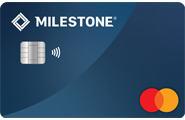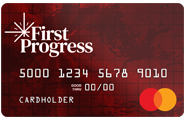Table of Content
Understanding The Credit Utilization Ratio
When we talk about credit utilization we’re talking about how much your total credit balance is compared to the total credit limit you have available.
That means if you currently have a $1,000 credit limit and you have an outstanding debt of $500 your credit utilization would be 50%.
You’re using half of what you have been given. However, a high credit utilization, considered anything over 30%, is going to hurt your credit score.
If you can get your credit utilization to a good level you’re going to help yourself in improving your credit score.
That’s going to help you get the type of credit you need in the future. If your credit utilization goes up your credit score will go down.
That’s because it shows a potential lender that you’re spending a lot of money on debt each month and you likely can’t afford everything that you have.
This ratio is calculated by looking at the sum of all of your cards, meaning all of your available credit and all of your current debt.
But that doesn’t mean no one is looking at individual cards. That means if you’re using too much on a single card and nothing on another that still isn’t going to look good for your utilization ratio.
If you have too much utilization overall you could end up denied for the types of credit that you really need and that could mean trouble getting a house or a car.
If you do get approved you could end up with a higher interest rate or a larger down payment required because of your credit score.
How Does It Work?
Basically, your credit utilization is based on revolving credit only, which means credit cards and short term lines of credit.
This is not counting things like loans for a car or a house. That’s going to be a part of your credit score, but in a completely different way.
When we talk about revolving credit we’re talking about something that you could, theoretically, pay on for almost forever.
It just continues to carry over to the next month and the next month whenever you make a payment lower than your full bill. You can even continue to charge more things so that the payment the next time is going to take even longer to pay off.
For anyone who hasn’t gone into default or already maxed out their card they can just keep borrowing even more and they’ll continue to pay even more interest.
Now, if you pay off your balance at the end of every single month then you’re not going to accrue interest, which will help you keep your credit utilization number down as well.
When we look at those loans we mentioned earlier we’re talking about your debt-to-income ratio, which is a slightly different number that compares how much money you have coming in compared to how much money you have going out to pay for your bills.
This is something that lenders use, but it’s not actually something that you’re going to see reflected on your credit score.
Top Offers
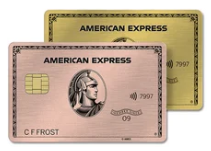


Top Offers



Top Offers From Our Partners
How To Calculate your Credit Utilization Ratio?
You can actually take a look at what your own credit utilization is easily enough. All you have to do is take a look at what the limits are on your credit cards and how much you currently owe on each of them.
That’s easy to do because all the information is on the statements that you receive every month. Whether they show up online or in your mail, you can see the numbers when you make your payments.
You can also call the number on your statement to ask them about it.
So, let’s take a look at an example with three credit cards that each have a different balance on them and we’ll look at what these mean.
| Balance | Limit | Utilization Ratio | |
|---|---|---|---|
| Card 1 | $2,000 | $5,000 | 40% |
| Card 2 | $3,000 | $10,000 | 30% |
| Card 3 | $1,000 | $6,000 | 16.6% |
| Total | $6,000 | $21,000 | 28.5% |
If you have the three cards we listed here, each with the balance and limit we mentioned, you’re going to have $6,000 owed on $21,000 available, which comes out to 28.5%.
Keep in mind that your credit score is calculated based on the ratio of what’s actually been reported.
Some credit card companies don’t report your balance every month and when that’s the case you could have a higher or lower credit utilization ratio than is actually accurate.
How Credit Utilization Impacts Your Credit Score
This is actually the second most important section on your entire credit report after your payment history.
It actually counts as 30% of your total score, which is something you absolutely want to keep in check.
If you have a high utilization ratio you could be seen as someone who spends a lot of discretionary income on debt or someone who is overspending. That’s definitely not going to help you in the future.
Your FICO Score
With this score they’re going to look at individual card utilization as well as at the total credit utilization you have over all of your credit cards.
You want to keep each of these numbers below 30% because that’s where you’re going to show your potential lender that you know how to manage your money the right way.
Your Vantage Score
This score just tells you that you should watch your credit utilization because it’s highly influential, but they don’t tell you just how much it accounts for or how much you should keep it under.
As a result, sticking with the 30% is probably a good idea.
In general, you’re going to want to keep your ratio as low as possible because that’s going to reflect better on you.
However, some advise keeping your ratio at approximately 5% to show that you’re still using the cards and they’re still actively available to you. That shows you’re actually managing your credit rather than just leaving it sit.
Credit Utilization and Your Loan
Your credit score is designed to help a potential lender decide if you’re going to pay back the money that they give you.
If your credit card balance is high then chances are higher that you’re not going to make the payments that you should. And that’s going to affect whether or not you can get the credit you need.
Your lender wants to know that you can manage money, and that’s why your credit utilization is going to be an important factor.
It’s actually going to show two different things to a potential lender when you fill out an application.
- You could have a higher debt-to-income ratio.
- These are the most important factors in your application.
Even though your debt-to-income ratio doesn’t go into your credit score it’s still something that lenders look at and it’s going to be an important number for you to look at as well.
It shows whether you’re going to be able to afford yet another financial payment.
Now, there’s no specific debt-to-income ratio that’s acceptable or not acceptable because banks or credit unions or any other lender gets to decide on their own. That means you’re going to need to figure it out for yourself.
If you have a high balance it looks like you can’t afford the things you’ve purchased. It’s also going to decrease your credit score and that’s going to show lenders you might be in trouble.
Top Offers

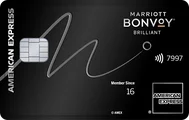
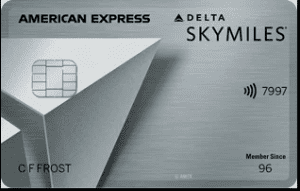
Top Offers



Top Offers From Our Partners
How to Improve Credit Utilization Ratio?
Here are a couple of simple and important ways to improve your utilization ratio:
Apply for a Card
One way you can decrease your credit utilization ratio is to increase the amount of available credit that you have.
Just make sure that you don’t spend any money on the new card, and know that your credit score could be affected negatively even though your credit utilization ratio will improve.
Increase Your Limit
Another option is to ask your current credit issuers to up your credit limit, which can also help you decrease your credit utilization rate.
You just need to make sure that you’re not spending more because you now have more available.
Track Your Spending
If you track the money that you’re spending you’re going to be less likely to spend more than you should.
You want to make sure that you’re paying attention to each purchase you make and the overall utilization of each of your cards.
You can keep an eye on accounts online to make sure you’re not spending more than 30% on any individual card.
For those who have a little bit of trouble keeping all of this on track, you can even set up alerts with your bank to know when you’re getting really close to that 30% ratio.
Pay Down Debt
When you make only the minimum payment on your cards you’re going to be paying for a long time.
Instead, pay more than the minimum or make two payments on your card each month to help pay off the debt even faster.
The key is to make sure you’re paying in more than you’re spending on the cards (and hopefully you’re not spending anything).
Don’t Close Your Card
Paying off a credit card is great and it helps you to lower your credit utilization, but you don’t want to close out the card.
When you do it actually increases your credit utilization because now you have less available credit compared to the credit you’re using.
Increase Your Payments
Making a payment twice a month will help you decrease your credit utilization and will make it look better on your credit report.
After all, if you’re only paying when the bill is due to your credit company could be reporting a high balance before you make the payment to your credit report, which gives the wrong view of how much revolving credit you actually use.
Use a Personal Loan
Finally, you can use a personal loan to pay off your credit cards. This changes the credit utilization number you have because you’re paying off that debt and moving it to a different type of debt. It also helps you to decrease your interest rate.
On the other side, you want to make sure you’re looking at the interest rate and you’re actually getting the rate you expected. Also, make sure you’re not spending more on the credit card now that there’s no balance on it.
